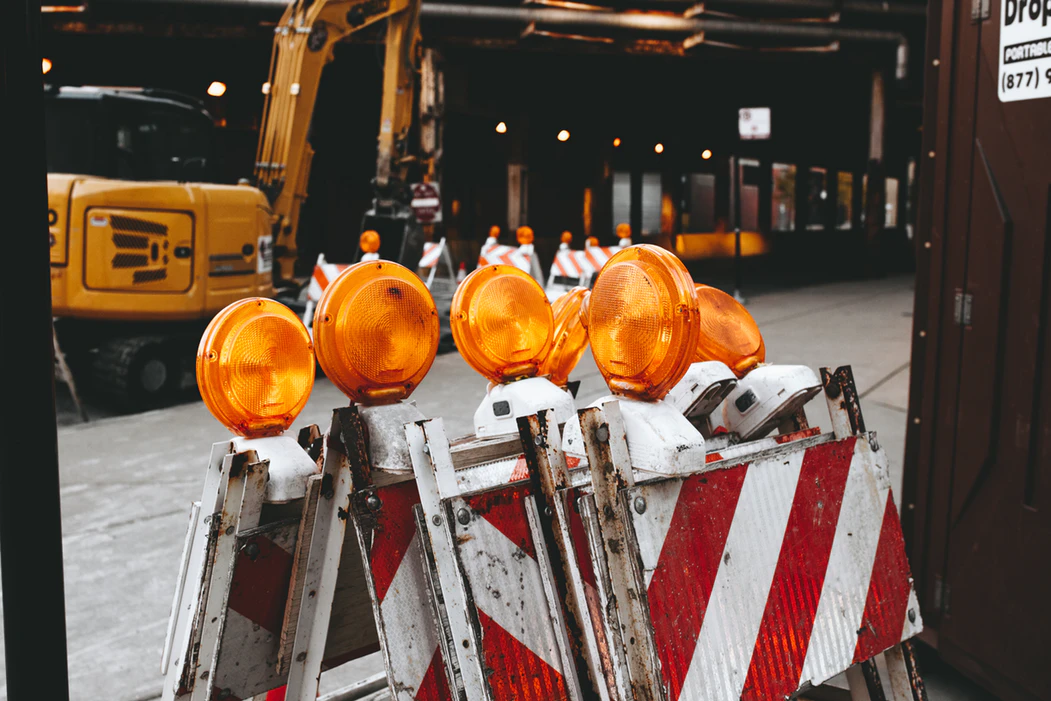While we are all probably tired of hearing about COVID-19’s outbreak and the impact of it spreading, you can’t deny that this pandemic has significantly changed the landscape of our lives. Usually around springtime, we ramp up our construction schedules to take advantage of the more moderate weather.
And during that same time, many of us also enjoy attending big industry events. (We know our CEO was certainly looking forward to sharing her views on repairing concrete leaks at the 2020 International Concrete Repair Institute Spring Convention.)
However, COVID-19 has made a lot of these activities impossible for the time being. After all, no one wants the disease to spread any further than it already has. And human contact is the main way it spreads. So worldwide isolation protocols have been put in place to limit human interaction.
For those of us in construction, that makes it harder to continue work as usual. In some cases, worksites have been shut down completely throughout France, Spain, Austria, and other regions.
However, not all worksites are closing currently. In other areas, they’ve been allowed to continue, but only if they adhere to certain restrictions. For construction work in British Columbia, Canada, that includes limiting the number of people working in one space, thoroughly cleaning common areas, and sending people with COVID-19 symptoms home.
Though, these restrictions likely vary for other regions both inside and outside of Canada. For instance, in Northern California, construction is also considered essential but uses slightly different regulations. So worksites remain open with workers ensuring they work spaced apart from one another while employers set other limitations on a case-by-case basis.
Regardless, if your project is still underway, you may wonder what you can do to keep your worksite constructive and safe.
To help you prepare, let’s go over the major industry challenges caused by COVID-19 and what you can do about them.
Currently, COVID-19 Poses At Least Three Major Challenges to Construction
While there are many challenges for worksites right now due to COVID-19, some of the main ones a worksite will likely face include the following three.
Worker Safety
Even before the disease’s global outbreaks, workers were already concerned about their safety at worksites. In fact, around 39% of over 1,000 workers surveyed by industry training specialist 360training expressed rising concerns over the matter. The biggest issues to them at the time included the possibility of slipping, tripping, falling, and electrical hazards.
However, the biggest issue now to anyone’s health is COVID-19.
Because of the disease, more than 1,000,000 lives have been affected around the world.
In response, many countries have enforced rules that encourage social distancing, a practice meant to stop the spread of the disease. So your teams will need to do the same on the worksite.
Unfortunately, that means minimizing the amount of contact workers have with one another. And worksites are often a place where dozens of people work together to make sure everything is built on time.
Labor Shortages
Of course, no matter how well your construction team practices social distancing, you’ll likely have to deal with some labor shortages.
At this stage, most people are being encouraged to stay away from crowds as much as possible. This is especially true for those who are most at risk for contracting COVID-19 or who have traveled recently. As a result, more and more people are avoiding workplaces, making sure they self-quarantine, work remotely, or look for work they can do remotely.
Stagnant Productivity
And with fewer workers comes a sharp decline in productivity. After all, there are not as many people around to work, so work subsequently slows down. Construction schedules get longer. And deadlines loom ever closer with no respite in sight.
It doesn’t help that our industry was already currently dealing with a significant issue in this area. In fact, according to McKinsey&Company’s 2017 report, the construction industry’s productivity is the same as it was 80 years ago.
The additional labor shortages from COVID-19 will only stagnate industry productivity further, resulting in more delays and increasing project costs.
However, You Can Reduce the Impact with the Following Steps
So, we know COVID-19 has caused a number of issues for builders everywhere. What can we do about it?
Let’s take a look at some of the steps we can all take.
Encouraging Social Distancing and Health-Care Practices
First, think about how you could encourage social distancing at your worksite. For instance, a number of workers are now shifting toward remote work. This is mainly due to an increased reliance on cloud technology, which allows workers to save worksite data without needing to physically go to the worksite.
This has resulted in a number of innovative devices lately. Not least of which are the Maturix™ Smart Concrete® Sensors. These allow contractors to get wireless reports and alerts about a concrete’s temperature and developing strength as it cures in real time.
If your work involves monitoring concrete or you know someone whose work does, now might be the time to look into these sensors. They offer a way to know exactly what is happening to curing concrete without needing to physically be at the worksite.
You can learn more by reading our latest case study on the sensors.
Sounds good, but what about those of you who can’t work remotely?
It’s true that not everyone can work from home for a worksite. After all, you need workers on-site to keep the construction going.
Luckily, there are cautionary measures you can follow to protect yourself and your fellow workers. These can include doing the following:
- Displaying signs at worksite entry points that list health and safety measures
- Staggering project team break schedules to reduce the number of people in one space
- Staying two meters apart from one another
- Making sure only one person occupies a freight elevator
- Reducing any in-person meetings
- Cleaning and disinfecting personal protective equipment and other regularly touched items
- Doing the same for surfaces that you often come into contact with
- Wearing gloves whenever possible
- Having workers avoid traveling to worksites together or with any other individuals
- Encouraging the installation of extra handwashing stations
- Self-isolating for two weeks if you experience any COVID-19-like symptoms
With these measures in place, you can significantly reduce the safety concerns over COVID-19.
Using Less Labor-Intensive Products That Maximize Concrete Performance
Now, what about dealing with labor shortages and stagnant productivity?
While not easy to solve right away, these challenges can be reduced by simply using less labor-intensive and more efficient products. We suggest you try using our two admixtures: our Krystol Internal Membrane™ (KIM®) for concrete waterproofing and our Hard-Cem® for increased concrete durability.
Why?
Well, KIM can completely replace external waterproofing membranes. It does this with Krystol® technology. This technology reacts to any water ingress in concrete by forming needle-shaped crystals that can block water from passing through.
So you won’t need additional labor to apply an external membrane or manage its maintenance and possible repairs. Instead, you can speed up worksite productivity just by adding KIM into the concrete during the batching process.
A similar result is achieved if you use Hard-Cem to make your concrete more durable. Like KIM, you just add it directly to your concrete mix. Once added, it will make your concrete durable enough to resist both highly abrasive and erosive forces. That way, you can avoid all the work that goes into using surface-applied hardeners. And you won’t even have to worry about the health hazards that come with dry shake products!
(You can see some great examples of these products at work when you look at our case studies for the Aster Private Hospital and the Vancouver Convention Centre.)
With these innovative products and helpful practices at hand, you can continue working even when COVID-19 has made the more traditional construction methods harder to implement. After all, construction by its very nature requires collaboration, adaptation, and ingenuity. You spend your days solving problems and getting things done. And together, we’ve got this!





